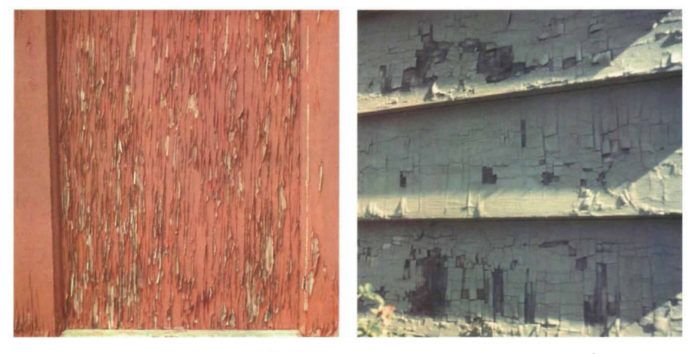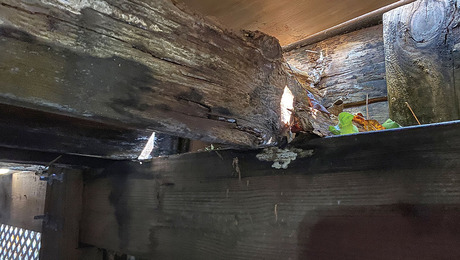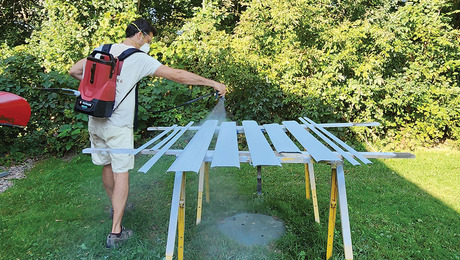Why Exterior Finishes Fail
Government scientists explain why paint cracks, blisters and peels on your house, and how you can prevent it.

Synopsis: Ever wonder why the paint starts to peel off your house much sooner than you expect? A trio of authors from the USDA Forest Products Laboratory in Madison, Wisconsin, explain it in this article. A sidebar in the PDF below offers three suggestions for making your next exterior paint job last.
Every neighborhood has at least one house that looks like it has a bad case of eczema—flaking paint everywhere, bare wood exposed to the elements, smears of mildew and stains. It looks awful. You might be working on this house; worse yet, it could be yours.
The normal life of a finish can be shortened in two ways: The finish can become discolored (staining, bleeding, etc.), or it can degrade (peeling, cracking, blistering). While discoloration can occur almost anywhere on a house, paint degradation is usually limited to places exposed to the weather or to water. Areas that degrade the fastest are those exposed to the greatest amount of sun and rain, usually on the south and west sides of buildings. Of course, there are ways to avoid these problems. In our research at the U. S. Forest Products Research Lab, we’ve studied the various symptoms of exterior house-paint degradation and discovered some preventative methods.
Water is the culprit behind most peeling paint
Peeling paint is usually caused by water that gets between paint and the wood’s surface, especially if the surface was not clean prior to painting. In some cases, the effects of water are fairly obvious. Leaky roofs, ice dams and inadequate roof overhangs are often causes of peeling paint. In other cases, sources of moisture are not so obvious. Moisture from inside a building can migrate through gaps around windows and cause paint failure. Interior moisture can also cause paint failure on house siding.
Sometimes, paint failure is most severe outside a single room. This type of problem often occurs outside kitchens and bathrooms where high humidity is present, particularly in older homes that lack vapor barriers. It’s sometimes difficult to determine the source of the moisture. For instance, in the top photo on p. 61, the siding is protected from rain by an overhang. Evidently then, the source of the moisture is either condensation (from a dryer vent, for instance) or a migration of moisture from inside the structure.
The first phase of paint peeling may be the formation of moisture blisters. These blisters occur where outside moisture such as rain enters wood through joints and other end-grain areas of boards and siding. After blisters appear, they dry out and collapse. Small blisters may disappear completely, but fairly large ones may leave rough spots. In severe cases, paint will peel. Thin coatings of new, oil-based paint are the most likely to blister. Old, thick coats are usually too rigid to swell and form blisters, so the paint cracks and peels instead.
Moisture may also enter wood because of poor construction and maintenance, particularly in the lower courses of siding. Paint failure is most severe on the side of a building that faces the prevailing wind, which can drive moisture into gaps or cracks. Damage appears after spring rains and throughout the summer season. Moisture blisters can occur on both heated and unheated buildings.
For more photos and details on why exterior finishes fail, click the View PDF button below.






















